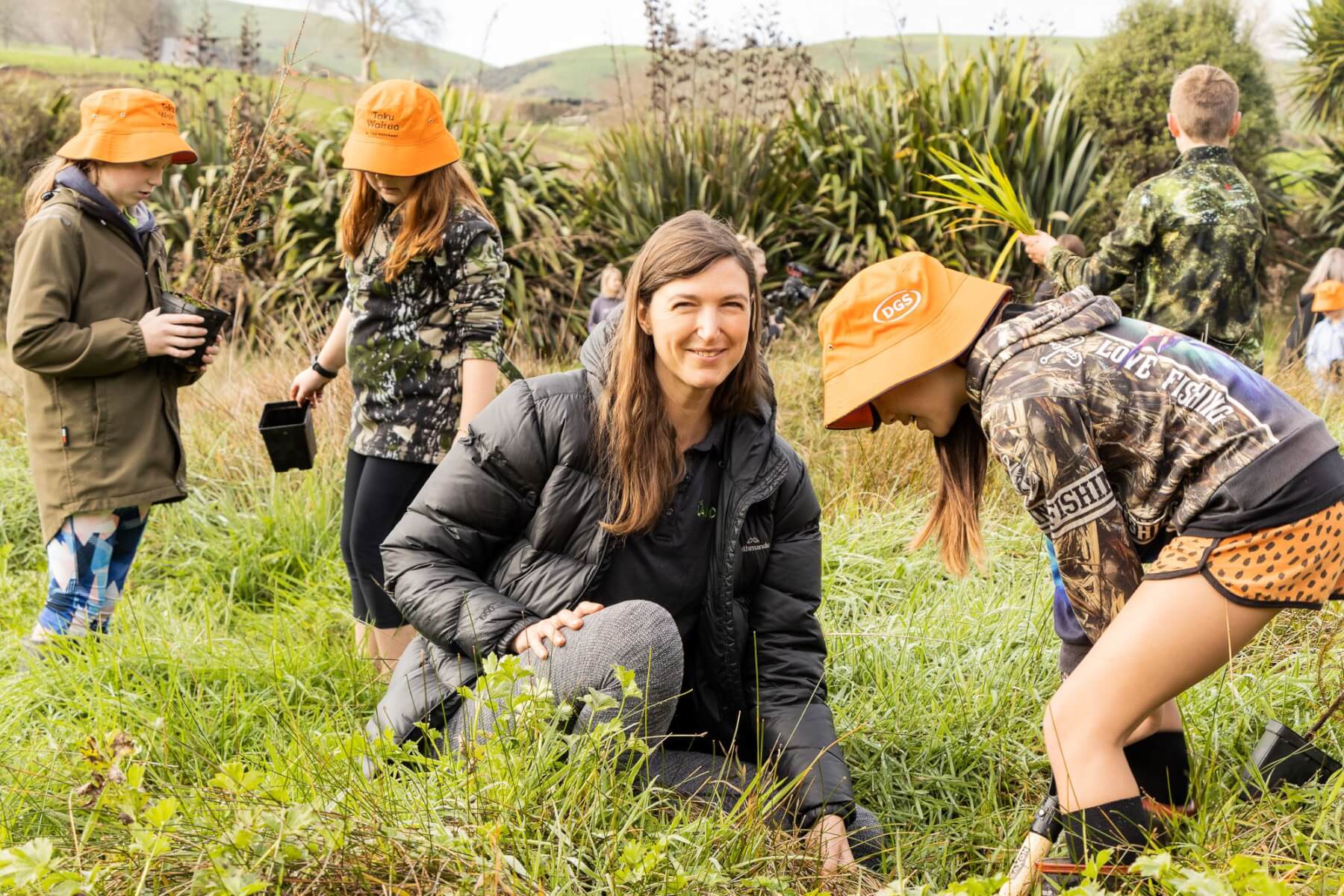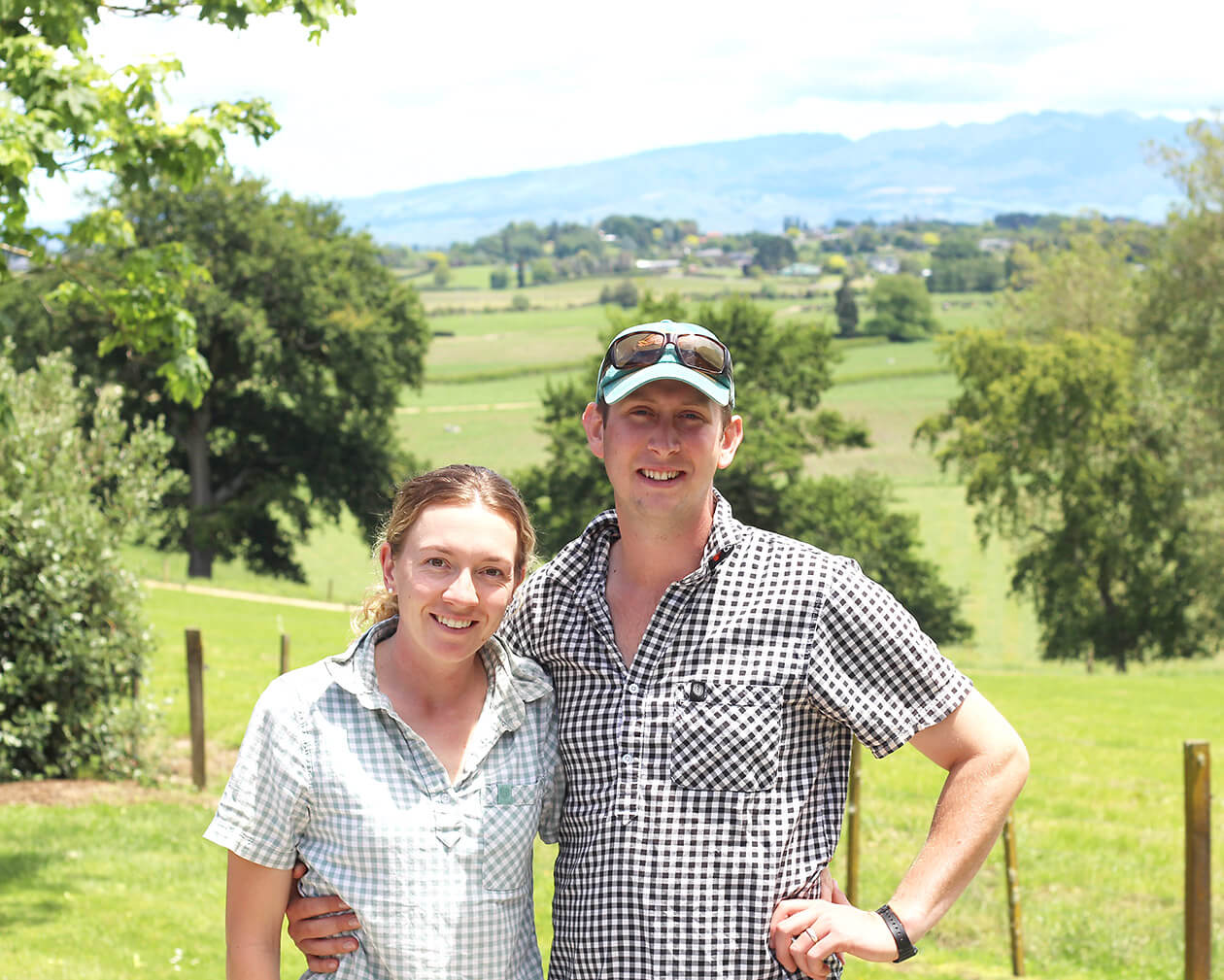
Bush Macky says the restoration work which has encouraged more native birds to his farm has been rewarding.
Dairy farmers, sheep and beef farmers, iwi and other community members are celebrating the second anniversary of a largescale initiative to create an ecological corridor in the Waipā district.
The Taiea te Taiao project will link Maungatautari and Mt Pirongia – 40km apart – by planting along the Mangapiko Stream and its tributaries, on farms and other properties.
Other environmental work is also underway, including restoring wetlands and
predator control.
“A key goal is to create stepping stones along the corridor that provide attractive stopping points for native birds and bats to rest and feed, mostly by planting trees. This will help increase wildlife numbers and biodiversity,” says project
coordinator Bexie Towle.
Dairy farmer Bush Macky says it’s a fabulous project at the heart of the community.
“It’s so rewarding working with the hundreds of people and more than
20 organisations involved, including DairyNZ and dairy companies, to help native wildlife thrive and enhance local waterways.”
The project is celebrating its two-year anniversary on Tuesday on Bill Garland’s
farm, next to Sanctuary Mountain Maungatautari.
At the Mt Pirongia end of the corridor, on their farm Bush and his family have planted more than 10,000 trees and plants.
They created a duck pond surrounded by planting and retired some land
from farming.
Bush says there’s been no loss in farm production and no impact on
business viability
“It’s a win-win. We’ve added value to the community and our property. We’re seeing more native birds on our farm than ever before.”
So far, more than 200,000 plants have been added to the corridor.
Nine kilometres of waterways have been fenced to protect them and native
trees planted alongside.

Bexie Towle, with a young team, pictured on one of the many planting days around the Mangapiko Stream.
Erosion control and willow removal is also underway on the Mangapiko Stream.
The corridor planting is regularly maintained, with weed control across 22 hectares.
A comprehensive pest management programme includes trap lines and bait station networks on both maunga, and traps on private property.
Four iwi are involved – Ngāti Apakura including Pūrekireki Marae, Te Ruranga
o Ngāti Apakura, Ngāti Korokī Kahukura and Ngāti Hikairo.
Nine tohu whenua – heritage sites including pā, lie along the Mangapiko Stream,
underlining the relationships between nature and people who once lived between the two maunga.
Poto Davies of Ngāti Koroki Kahukura says the iwi want the two maunga connected, first and foremost.
“Beautifying the Mangapiko Stream will enhance its mana. The stream is the veins of the land, and the whenua is important to us all,” said Poto.
Heritage sites alongside the Mangapiko Stream are being protected as part of the project.
Predators, tuna/freshwater eels and pekapeka/bats are monitored using mātauranga Māori methods.
Clare St Pierre, co-chair of the Maungatautari to Pirongia Ecological Corridor
Incorporated Society, says it’s amazing to be creating biodiversity strongholds for
birds.
“We’re providing an environment for our iconic species so people can see them on their back doorstep.”
More than 20 organisations are involved in the Taiea te Taiao project including funders, sponsors and supporters.
The Ministry for the Environment provides funding through the Freshwater Initiatives Fund for two employees, and NZ Landcare Trust coordinates the project.
Industry good organisation DairyNZ supports farmers in their work to reduce environmental footprint and organises on-farm fieldays for the project.
Dairy company Fonterra contributes funding for the project, and Fonterra and Open Country Dairy support their farmers with on-farm environmental work.

Bayley and Josh Storey
Doing our best…
The Storey family dairy farm is one of the stepping stones for native birds and bats in the ecological corridor.
The Te Awamutu family is excited to help boost biodiversity.
Josh, wife Bayley and their extended family have planted more than 25,000 trees on the farm, adding to a remnant forest of Kahikatea and other native trees.
They have removed willow and weeds from the Mangapiko Stream and retired some land from farming.
“Environmental work on our farm spans six generations – including my great grandfather Doug, my grandfather John, my father Doug and now me and Bayley,” says Josh.
“As farmers, we want to do our best to protect the land and enhance native wildlife. We love seeing tūī, kererū and karearea/New Zealand falcon on our farm.”








